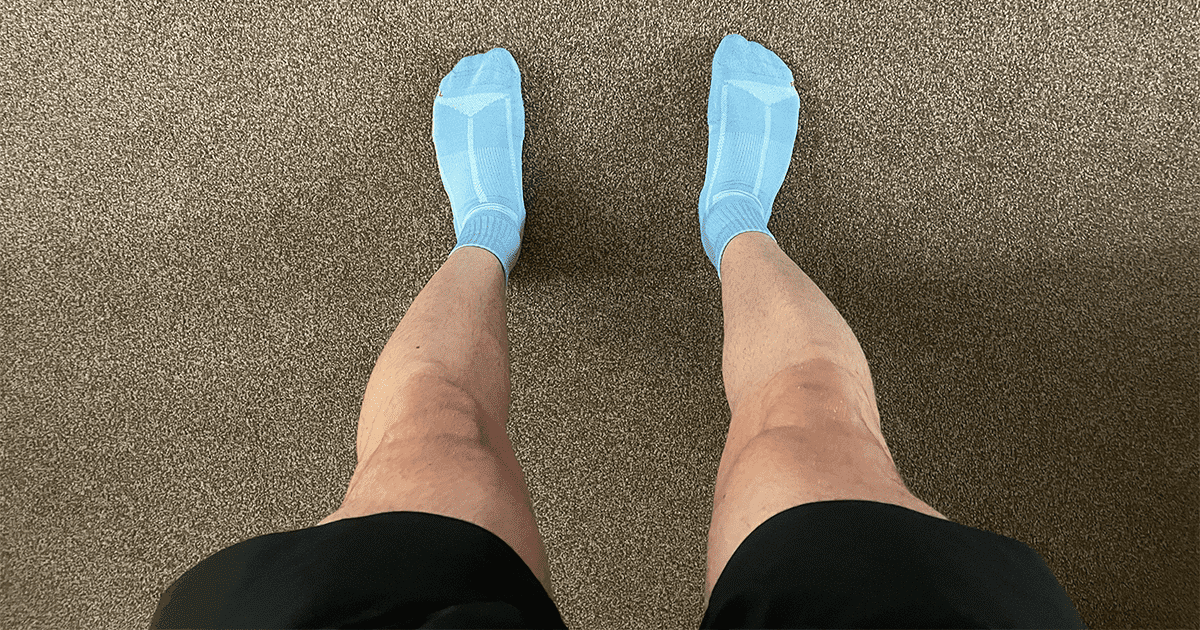Is 30 minutes of running per day enough to help me lose weight?
We discuss whether or not running 30 minutes per day is enough to help promote weight loss.

Running is great for weight loss, especially when done consistently. While running itself is excellent for losing weight, you’ll want to pair this with further health habits such as a well-balanced diet, proper hydration, and good quality sleep.
One of the best things about running is the little equipment you need to start. Unlike sports such as cycling and swimming, where you need a bike or access to a pool, all you need is a pair of running shoes. However, it’s important to choose the right pair of running shoes for you.
No two running shoes are the same – we each react differently to various brands and styles. For example, one runner may overpronate (foot moves inwards when your run) while another supinates (ankle doesn’t move inward very far when you run). Both of these running styles are not ideal, but with the right pair of running shoes, will reduce your risk of injury, allowing you to continue your weight-loss journey.
When choosing a pair of running shoes, try out multiple pairs. If possible, find a store that does gait analysis near you. This tests your running gait, including how your feet land, helping you find the best pair of running to suit your running style.
Consistency

The key to losing weight is consistency. Remaining consistent with both running and diet will produce the best results. Whilst it may be tempting to run every day (at least at the beginning), it’s essential to be realistic. Starting out with too high expectations will only set you back, so perhaps start off with two or three days per week, not seven.
Equally, you should set reasonable and achievable goals. For example, let’s say you plan on losing thirty pounds total – you want to set smaller goals that build-up to this. These smaller goals could be losing one to pounds a week (max) – this is entirely doable and not too big a goal that it will de-motivate you.
Ensure to start off slow – not trying to run too often, too far, and for too long, this only increases your risk of picking up an injury, later deterring your weight-loss progress. Oh, and you’ll probably later fall out of routine.
When setting your goals and planning your weight-loss journey, be as specific as possible. Running 30-minutes a day, two to three times a week is entirely reasonable. Over time, this will develop into a habit. As your body becomes greater accustomed to running a handful of times a week, you can slowly increase this. However, as a general rule of thumb: increase your weekly mileage by no more than 10%, as this drastically increases your risk of injury.
How many calories will I burn by running for 30 minutes?

There are many factors that determine how many calories you can burn by running for 30 minutes. These include body composition, weight, running terrain, and the speed in which you are running.
To provide an example, Healthline report that a 120-pound person will burn an estimated 11.4 calories per minute while running. If this person were to run at a 10-minute per mile pace, then they would burn 114 calories in 10 minutes. This same individual would, therefore, burn a total of 342 calories per 30 minutes of running.
High-intensity running will burn the most calories, also known as interval training. In fact, once you’ve finished your workout/run you’ll still burn calories for the following few hours – much like high-intensity interval training.
An example interval session for beginners is as follows:
- 5-minute jog warm-up
- 4×3 minutes at a fast but sustainable pace
- 2.30-minute jog between each interval
- 5-minute cooldown jog
After your warm-up jog, perform various dynamic stretches such as leg swings, walking lunges, and side shuffles. Conversely, after you’ve finished the interval session, do static stretches, including the standing hamstring stretch, calf stretch, and standing shin stretch. This, too, reduces your risk of injury, keeping you healthy and promoting longevity.
Caloric Deficit
In order to shed the pounds, you don’t necessarily need to do a lot of running. The key to effectively losing weight is to enter a caloric deficit. A caloric deficit is a shortage of calories consumed to calories required to maintain the same weight.
A caloric deficit can be achieved either by eating fewer calories or by exercising to burn those excess calories. For example, a male who eats 3,000 calories per day and is looking to lose weight may start by cutting their daily caloric intake down to 2,500 calories. Reducing your calorie intake paired with exercise is the best way to lose weight quickly.
Despite this, try you best not to get too tied up on calories – this can develop into an unhealthy habit or borderline obsession. Instead, try to be mindful of what you’re eating, leading a healthy and well-balanced diet.
30 minutes is the perfect number

Jennifer Warner from WebMD discusses why shorter workouts may be more beneficial. Warner mentions that those who exercise for 60-minutes per day may feel inclined to eat more food in order to compensate for their longer workout and therefore, lose less weight.
Secondly, researchers suggest that those who only exercise for a total of 30 minutes have more energy left for the rest of the day. This prevents individuals from engaging in sedentary behaviour, leaving them with more energy to do more active activities such as walking.
Finally, it was concluded that those who exercised 30 minutes per day lost two pounds more body weight than those who exercised 60 minutes per day.
So, what does this mean? Essentially, for the average person, 30-minutes of exercise per day, such as running, is a sustainable approach to losing weight and living a healthy and balanced lifestyle – 30 is the magic number.
30 minutes a day, 3-5 days a week

If you’re wanting to cut those pounds, you’re going to want to run a minimum of three to five days a week to see real results. We recommend dedicating two days per week for rest at a minimum. This will prevent injury and allow your body adequate time to recover from each of your runs or training sessions.
Second, running in 30-minute chunks is much easier to run faster, as previously discussed. Including sprint intervals or faster running into your runs will allow you to burn more calories. We recommend including a faster pace run into one or two of your runs per week (like the example interval session mentioned earlier in this article).
Lastly, weight-loss isn’t the only benefit you’ll receive from running 30 minutes per day. You will receive many health benefits such as improved heart health, reduced blood pressure, improved mental health, and a stronger immune system.
So, get off the sofa, dig out those old running shoes and run a loop or two around the block.
Don’t dive in the deep end…
While 30 minutes of running a day is great for promoting weight loss, it’s essential to build up to running a minimum of five days per week instead of diving straight into it. Beginning to run five days per week with no prior experience will most likely lead to injury. This will slow down your progress and stop you from reaching your goals.
We suggest beginning to run two days per week and slowly building this up over a period of weeks. This will reduce your risk of injury and keep you motivated to achieve your weight loss/health goals.
To conclude
Running for 30 minutes per day, five days a week is plenty if you’re looking to lose weight. It is essential to remain consistent with exercise, nutrition, sleep, and hydration if you want to see real progress. Just be sure to build up your running gradually to reduce your risk of injury.
Nonetheless, in summary: running 30 minutes per day will definitely help you lose weight, granted your diet is in check and you’re dedicated to your goals.

Matthew is a lifelong runner, chief tester of all products, the founder of Running101, and freelance content writer for active brands. When he’s not writing, he enjoys lifting weights, cycling in the Lake District, and watching fast cars drive in circles on a Sunday. He also has a BA in sport, exercise and physical activity from the University of Durham.




